Korg AW-2U Handleiding
Bekijk gratis de handleiding van Korg AW-2U (4 pagina’s), behorend tot de categorie DJ Gear. Deze gids werd als nuttig beoordeeld door 86 mensen en kreeg gemiddeld 4.4 sterren uit 43.5 reviews. Heb je een vraag over Korg AW-2U of wil je andere gebruikers van dit product iets vragen? Stel een vraag
Pagina 1/4

Precautions
Location
Using the unit in the following locations can result in a malfunction.
• In direct sunlight
• Locations of extreme temperature or humidity
• Excessively dusty or dirty locations
• Locations of excessive vibration
• Close to magnetic fields
Power supply
Be sure to turn the power switch to OFF when the unit is not in use. Remove the battery in order
to prevent it from leaking when the unit is not in use for extended periods.
Interference with other electrical devices
Radios and televisions placed nearby may experience reception interference. Operate this unit
at a suitable distance from radios and televisions.
Handling
To avoid breakage, do not apply excessive force to the switches or controls.
Care
If the exterior becomes dirty, wipe it with a clean, dry cloth. Do not use liquid cleaners such as
benzene or thinner, or cleaning compounds or flammable polishes.
Keep this manual
After reading this manual, please keep it for later reference.
Keeping foreign matter out of your equipment
Never set any container with liquid in it near this equipment. If liquid gets into the equipment,
it could cause a breakdown, fire, or electrical shock. Be careful not to let metal objects get into
the equipment.
THE FCC REGULATION WARNING (for USA)
This equipment has been tested and found to comply with the limits for a Class B digital device, pursuant
to Part 15 of the FCC Rules. These limits are designed to provide reasonable protection against harmful
interference in a residential installation. This equipment generates, uses, and can radiate radio frequency
energy and, if not installed and used in accordance with the instructions, may cause harmful interference
to radio communications. However, there is no guarantee that interference will not occur in a particular
installation. If this equipment does cause harmful interference to radio or television reception, which can be
determined by turning the equipment off and on, the user is encouraged to try to correct the interference by
one or more of the following measures:
• Reorient or relocate the receiving antenna.
• Increase the separation between the equipment and receiver.
• Connect the equipment into an outlet on a circuit different from that to which the receiver is connected.
• Consult the dealer or an experienced radio/TV technician for help.
Unauthorized changes or modification to this system can void the user’s authority to operate this equipment.
Notice regarding disposal (EU only)
When this “crossed-out wheeled bin” symbol is displayed on the product, owner’s manual,
battery, or battery package, it signifies that when you wish to dispose of this product, manual,
package or battery you must do so in an approved manner. Do not discard this product,
manual, package or battery along with ordinary household waste. Disposing in the correct
manner will prevent harm to human health and potential damage to the environment. Since
the correct method of disposal will depend on the applicable laws and regulations in your local-
ity, please contact your local administrative body for details. If the battery contains heavy
metals in excess of the regulated amount, a chemical symbol is displayed below the “crossed-
out wheeled bin” symbol on the battery or battery package.
CALIFORNIA USA ONLY
This Perchlorate warning applies only to primary CR (Manganese Dioxide) Lithium coin cells sold or distributed
ONLY in California USA.
“Perchlorate Material-special handling may apply, See www.dtsc.ca.gov/hazardouswaste/perchlorate.”
This device complies with Part 15 of the FCC Rules.
Operation is subject to the following two conditions: (1) This device may not cause harmful interference,
and (2) this device must accept any interference received, including interference that may cause undesired
operation.
Complies with Canadian ICES-003 Class B.
Conforme au Reglement Canadian NMB-003 classe B.
IMPORTANT NOTICE TO CONSUMERS
This product has been manufactured according to strict specifications and voltage requirements that are
applicable in the country in which it is intended that this product should be used. If you have purchased this
product via the internet, through mail order, and/or via a telephone sale, you must verify that this product is
intended to be used in the country in which you reside.
WARNING: Use of this product in any country other than that for which it is intended could be dangerous and
could invalidate the manufacturer's or distributor's warranty.
Please also retain your receipt as proof of purchase otherwise your product may be disqualified from the
manufacturer's or distributor's warranty.
Précautions
Emplacement
L’utilisation de cet instrument dans les endroits suivants peut en entraîner le mauvais fonction-
nement.
• En plein soleil
• Endroits très chauds ou très humides
• Endroits sales ou fort poussiéreux
• Endroits soumis à de fortes vibrations
• A proximité de champs magnétiques
Alimentation
Lorsque vous n’utilisez pas l’appareil, n’oubliez pas de le mettre hors tension. Retirez les piles pour
éviter toute fuite lorsque l’appareil ne sera pas utilisé pendant de longues périodes de temps.
Interférences avec d’autres appareils électriques
Les postes de radio et de télévision situés à proximité peuvent par conséquent souffrir d’interfé-
rences à la réception. Veuillez dès lors faire fonctionner cet appareil à une distance raisonnable
de postes de radio et de télévision.
Maniement
Pour éviter de les endommager, manipulez les commandes et les boutons de cet instrument
avec soin.
Entretien
Lorsque l’instrument se salit, nettoyez-le avec un chiffon propre et sec. Ne vous servez pas d’agents
de nettoyage liquides tels que du benzène ou du diluant, voire des produits inflammables.
Conservez ce manuel
Après avoir lu ce manuel, veuillez le conserver soigneusement pour toute référence ultérieure.
Evitez toute intrusion d’objets ou de liquide
Ne placez jamais de récipient contenant du liquide près de l’instrument. Si le liquide se renverse
ou coule, il risque de provoquer des dommages, un court-circuit ou une électrocution. Veillez à
ne pas laisser tomber des objets métalliques dans le boîtier (trombones, par ex.).
Note concernant les dispositions (Seulement EU)
Quand un symbole avec une poubelle barrée d’une croix apparait sur le produit, le mode d’emploi,
les piles ou le pack de piles, cela signifie que ce produit, manuel ou piles doit être déposé chez
un représentant compétent, et non pas dans une poubelle ou toute autre déchetterie convention-
nelle.
Disposer de cette manière, de prévenir les dommages pour la santé humaine et les dommages
potentiels pour l’environnement. La bonne méthode d’élimination dépendra des lois et règlements
applicables dans votre localité, s’il vous plaît, contactez votre organisme administratif pour plus de
détails. Si la pile contient des métaux lourds au-delà du seuil réglementé, un symbole chimique est
affiché en dessous du symbole de la poubelle barrée d’une croix sur la pile ou le pack de piles.
REMARQUE IMPORTANTE POUR LES CLIENTS
Ce produit a été fabriqué suivant des spécifications sévères et des besoins en tension applicables dans le pays
où ce produit doit être utilisé. Si vous avez acheté ce produit via l’internet, par vente par correspondance ou/et
vente par téléphone, vous devez vérifier que ce produit est bien utilisable dans le pays où vous résidez.
ATTENTION: L’utilisation de ce produit dans un pays autre que celui pour lequel il a été conçu peut être
dangereuse et annulera la garantie du fabricant ou du distributeur. Conservez bien votre récépissé qui est
la preuve de votre achat, faute de quoi votre produit ne risque de ne plus être couvert par la garantie du
fabricant ou du distributeur.
Vorsichtsmaßnahmen
Aufstellungsort
Vermeiden Sie das Aufstellen des Geräts an Orten, an denen
• es direkter Sonneneinstrahlung ausgesetzt ist;
• hohe Feuchtigkeit oder Extremtemperaturen auftreten können;
• Staub oder Schmutz in großen Mengen vorhanden sind;
• das Gerät Erschütterungen ausgesetzt sein kann.
• in der Nähe eines Magnetfeldes.
Stromversorgung
Stellen Sie den Netzschalter auf OFF, wenn das Gerät nicht benutzt wird. Wenn Sie das Gerät
über einen längeren Zeitraum nicht benutzen, nehmen Sie die Batterien heraus, damit sie nicht
auslaufen.
Störeinflüsse auf andere Elektrogeräte
Dieser kann bei in der Nähe aufgestellten Rund-funkempfängern oder Fernsehgeräten Emp-
fangsstörungen hervorrufen. Betreiben Sie solche Geräte nur in einem geeigneten Abstand von
diesem Erzeugnis.
Bedienung
Vermeiden Sie bei der Bedienung von Schaltern und Reglern unangemessenen Kraftaufwand.
Reinigung
Bei auftretender Verschmutzung können Sie das Gehäuse mit einem trockenen, sauberen Tuch
abwischen. Verwenden Sie keinerlei Flüssigreiniger wie beispielsweise Reinigungsbenzin, Ver-
dünnungs- oder Spülmittel. Verwenden Sie niemals brennbare Reiniger.
Bedienungsanleitung
Bewahren Sie diese Bedienungsanleitung gut auf, falls Sie sie später noch einmal benötigen.
Flüssigkeiten und Fremdkörper
Stellen Sie niemals Behältnisse mit Flüssigkeiten in der Nähe des Geräts auf. Wenn Flüssigkeit
in das Gerät gelangt, können Beschädigung des Geräts, Feuer oder ein elek-trischer Schlag die
Folge sein. Beachten Sie, daß keinerlei Fremdkörper in das Gerät gelangen.
Hinweis zur Entsorgung (Nur EU)
Wenn Sie das Symbol mit der „durchgekreuzten Mülltonne“ auf Ihrem Produkt, der dazugehörigen
Bedienungsanleitung, der Batterie oder dem Batteriefach sehen, müssen Sie das Produkt in der vor-
geschriebenen Art und Weise entsorgen. Dies bedeutet, dass dieses Produkt mit elektrischen und
elektronischen Komponenten nicht mit dem normalen Hausmüll entsorgt werden darf. Für Produkte
dieser Art existiert ein separates, gesetzlich festgelegtes Entsorgungssystem. Gebrauchte elektrische
und elektronische Geräte müssen separat entsorgt werden, um ein umweltgerechtes Recycling sicher-
zustellen. Diese Produkte müssen bei benannten Sammelstellen abgegeben werden. Die Entsorgung
ist für den Endverbraucher kostenfrei! Bitte erkundigen sie sich bei ihrer zuständigen Behörde, wo sie
diese Produkte zur fachgerechten Entsorgung abgeben können.
Falls ihr Produkt mit Batterien oder Akkumulatoren ausgerüstet ist, müssen sie diese vor Abgabe
des Produktes entfernen und separat entsorgen (siehe oben). Die Abgabe dieses Produktes bei
einer zuständigen Stelle hilft ihnen, dass das Produkt umweltgerecht entsorgt wird. Damit leisten
sie persönlich einen nicht unerheblichen Beitrag zum Schutz der Umwelt und der menschlichen
Gesundheit vor möglichen negativen Effekten durch unsachgemäße Entsorgung von Müll. Bat-
terien oder Akkus, die Schadstoffe enthalten, sind auch mit dem Symbol einer durchgekreuzten
Mülltonne gekennzeichnet. In der Nähe zum Mülltonnensymbol befindet sich die chemische
Bezeichnung des Schadstoffes.
Cd oder NiCd steht für Cadmium, Pb für Blei und Hg für Quecksilber.
安全上のご注意
火災・感電・人身傷害の危険を防止するには
以下の指示を守ってください
警告
この注意事項を無視した取り扱いをすると、死亡や重傷を負う可能性があります
・ 次のような場合には、直ちに電池をぬく。
○異物が内部に入ったとき ○製品に異常や故障が生じたとき
修理が必要なときは、サービス・センターへ修理を依頼してください。
・ 本製品を分解したり改造したりしない。
・
修理/部品の交換などで、取扱説明書に書かれていること以外は絶対にしない。
・ 大音量や不快な程度の音量で長時間使用しない。
大音量で長時間使用すると、難聴になる可能性があります。万一、聴力低下や耳鳴
りを感じたら、専門の医師に相談してください。
・ 本製品に異物(燃えやすいもの、硬貨、針金など)を入れない。
・ 温度が極端に高い場所(直射日光の当たる場所、暖房機器の近く、発熱する機器の
上など)での使用や保管はしない。
・ 振動の多い場所で使用や保管はしない。
・ ホコリの多い場所で使用や保管はしない。
・ 風呂場、シャワー室で使用や保管はしない。
・ 雨天時の野外などのような湿気の多い場所で、使用や保管はしない。
・ 本製品の上に液体の入ったもの(水や薬品等)を置かない。
・ 本製品に液体をこぼさない。
・ 濡れた手で本製品を使用しない。
OWNER’S MANUAL
MANUEL D’UTILISATION
BEDIENUNGSANLEITUNG
MANUAL DE USUARIO
取扱説明書
Thank you for purchasing the Korg Clip-on Tuner AW-2U.
Merci d’avoir fait l’acquisition du Clip-on Tuner AW-2U Korg.
Herzlichen Dank für den Kauf des Korg Clip-on Tuner AW-2U.
Gracias por comprar el Korg Clip-on Tuner AW-2U.
このたびは、コルグ・クリップ・オン・チューナー AW-2Uをお買い上げいただきまして、誠
にありがとうございます。
4015-2 Yanokuchi, Inagi-city, Tokyo 206-0812 Japan
© 2010 KORG INC.
保証規定(必ずお読みください)
本保証書は、保証期間中に本製品を保証するもので、付属品類(ヘッドホンなど)は保証の対
象になりません。保証期間内に本製品が故障した場合は、保証規定によって無償修理いたし
ます。
1.本保証書の有効期間はお買い上げ日より1ケ年です。
2.次の修理等は保証期間内であっても有償となります。
・消耗部品(電池など)の交換。
・お取扱い方法が不適当のために生じた故障。
・天災(火災、浸水等)によって生じた故障。
・故障の原因が本製品以外の他の機器にある場合。
・不当な改造、調整、部品交換などにより生じた故障または損傷。
・保証書にお買い上げ日、販売店名が未記入の場合、または字句が書き替えられてい
る場合。
・本保証書の提示がない場合。
尚、当社が修理した部分が再度故障した場合は、保証期間外であっても、修理した日より3
ケ月以内に限り無償修理いたします。
3.本保証書は日本国内においてのみ有効です。ThiswarrantyisvalidonlyinJapan.
4.お客様が保証期間中に移転された場合でも、保証は引き続きお使いいただけます。詳しく
はサービス・センターまでお問い合わせください。
5.修理、運送費用が製品の価格より高くなることもありますので、あらかじめサービス・セ
ンターへご相談ください。発送にかかる費用は、お客様の負担とさせていただきます。
6.修理中の代替品、商品の貸し出し等は、いかなる場合においても一切行っておりません。
本製品の故障、または使用上生じたお客様の直接、間接の損害につきましては、弊社は一切の
責任を負いかねますのでご了承ください。
本保証書は、保証規定により無償修理をお約束するためのもので、これによりお客様の法律
上の権利を制限するものではありません。
■ お願い
1.保証書に販売年月日等の記入がない場合は無効となります。記入できないときは、お買い
上げ年月日を証明できる領収書等と一緒に保管してください。
2.保証書は再発行致しませんので、紛失しないように大切に保管してください。
注意
この注意事項を無視した取り扱いをすると、傷害を負う可能性、
または物理的損害が発生する可能性があります
・ 正常な通気が妨げられない所に設置して使用する。
・ ラジオ、テレビ、電子機器などから十分に離して使用する。
ラジオやテレビ等に接近して使用すると、本製品が雑音を受けて誤動作する場合
があります。また、ラジオ、テレビ等に雑音が入ることがあります。
・ 外装のお手入れは、乾いた柔らかい布を使って軽く拭く。
・ 長時間使用しないときは、電池の液漏れを防ぐために電池を抜く。
・ 電池や本体は幼児の手の届かないところに保管する。
・ 電池を過度の熱源(日光、火など)にさらさない。
・ ボタンやツマミに必要以上の力を加えない。
故障の原因になります。
・ 外装のお手入れに、ベンジンやシンナー系の液体、コンパウンド質、強燃性のポ
リッシャーは使用しない。
・ 不安定な場所に置かない。
WICHTIGER HINWEIS FÜR KUNDEN
Dieses Produkt wurde unter strenger Beachtung von Spezifikationen und Spannungsanforderungen
hergestellt, die im Bestimmungsland gelten. Wenn Sie dieses Produkt über das Internet, per Postversand
und/oder mit telefonischer Bestellung gekauft haben, müssen Sie bestätigen, dass dieses Produkt für Ihr
Wohngebiet ausgelegt ist.
WARNUNG: Verwendung dieses Produkts in einem anderen Land als dem, für das es bestimmt ist, verwendet
wird, kann gefährlich sein und die Garantie des Herstellers oder Importeurs hinfällig lassen werden. Bitte
bewahren Sie diese Quittung als Kaufbeleg auf, da andernfalls das Produkt von der Garantie des Herstellers
oder Importeurs ausgeschlossen werden kann.
Precauciones
Ubicación
El uso de la unidad en las siguientes ubicaciones puede dar como resultado un mal funciona-
miento:
• Expuesto a la luz directa del sol
• Zonas de extremada temperatura o humedad
• Zonas con exceso de suciedad o polvo
• Zonas con excesiva vibración
• Cercano a campos magnéticos
Fuente de alimentación
Apague la unidad cuando no la use la batería. Retire las baterías si no va a usar la unidad
durante un tiempo largo.
Interferencias con otros aparatos
Las radios y televisores situados cerca pueden experimentar interferencias en la recepción. Opere
este dispositivo a una distancia prudencial de radios y televisores.
Manejo
Para evitar una rotura, no aplique excesiva fuerza a los conmutadores o controles.
Cuidado
Si exterior se ensucia, límpiese con un trapo seco. No use líquidos limpiadores como disolvente,
ni compuestos inflamables.
Guarde este manual
Después de leer este manual, guárdelo para futuras consultas.
Mantenga los elementos externos alejados del equipo
Nunca coloque ningún recipiente con líquido cerca de este equipo, podría causar un cortocircuito,
fuero o descarga eléctrica. Cuide de que no caiga ningún objeto metálico dentro del equipo.
Nota respecto a residuos y deshechos (solo UE)
Cuando aparezca el símbolo del cubo de basura tachado sobre un producto, su manual de
usuario, la batería, o el embalaje de cualquiera de éstos, significa que cuando quiere tire dichos
artículos a la basura, p1-ha de hacerlo en acuerdo con la normativa vigente de la Unión Europea.
No debe verter dichos artículos junto con la basura de casa. Verter este producto de manera
adecuada ayudará a evitar daños a su salud pública y posibles daños al medioambiente. Cada
país tiene una normativa específica acerca de cómo verter productos potencialmente tóxicos,
por tanto le rogamos que se ponga en contacto con su oficina o ministerio de medioambiente
para más detalles. Si la batería contiene metales pesados por encima del límite permitido, habrá
un símbolo de un material químico, debajo del símbolo del cubo de basura tachado.
NOTA IMPORTANTE PARA EL CONSUMIDOR
Este producto ha sido fabricado de acuerdo a estrictas especificaciones y requerimientos de voltaje aplicables
en el país para el cual está destinado. Si ha comprado este producto por internet, a través de correo, y/o venta
telefónica, debe usted verificar que el uso de este producto está destinado al país en el cual reside.
AVISO: El uso de este producto en un país distinto al cual está destinado podría resultar peligroso y podría
invalidar la garantía del fabricante o distribuidor.
Por favor guarde su recibo como prueba de compra ya que de otro modo el producto puede verse privado
de la garantía del fabricante o distribuidor.
アフターサービス
修理についてのご質問、ご相談は、サービス・センターへお問い合わせください。
商品のお取り扱いについてのご質問、ご相談は、お客様相談窓口へお問い合わせください。
お客様相談窓口 TEL 03(5355)5056
● サービス・センター:〒168-0073 東京都杉並区下高井戸1-15-12
TEL03(5355)3537 FAX03(5355)4470
コルグAW-2U 保証書
本保証書は、保証規定により無償修理をお約束するものです。
お買い上げ日年月日
販売店名

Parts of the AW-2U and what they do
Internal mic Note name indicator
Input indicator
Reference pitch
Input select button
4 ST/6–8 ST button Clip attachment slot
Light button
Power button
UKULELE
Select button
Battery cover
Installing the battery
Turn the power off before you install or replace the battery. The battery included with the
AW-2U is for the purpose of verif ying that the unit operates correctly, and may not have
a very long life.
When the battery begins to run low, the liquid crystal display (in particular the meter
movement) will become fainter and the backlight will become dimmer. The AW-2U will
continue to function for a while longer, but tuning will become less accurate. Replace
the battery as soon as possible.
1. With the your thumb, lightly press the battery cover located on the back of the
AW-2U, turn it counter-clockwise, and remove it.
2. Replace the battery, being sure to observe the correct polarity so that the “+”
side of the battery is visible.
3. Turn the batter y cover clockwiseto reattach it.
Tuning procedure
1. Press the power button. The power will turn on/off each time you press this
button.
If the power is left on for approximately 20 minutes without any sound being
input, it will turn off automatically.
2. If necessary, to press the Light button set the backlight.
Each time you press the illumination button, the setting will cycle between soft
g g g auto unlit soft ...(*M)
Soft: To conserve battery life, the illumination will remain low.
Auto: The backlight will light up brightly when sound is input or when a button
is pressed. When there has been no input or button operation for approximately
ten seconds, the backlight will change to the “Soft” level of brightness.
Unlit: The backlight will not light up.
3. Use theinputselectbuttontochoosethesoundinputsource.(Refertothe“Where
to attach the clip”section.)
The setting will alternate between MIC and PIEZO each time you press the
button. (*M)
4. Use the ukulele select button to select your ukulele type.
The setting will alternate between STANDARD and BARITONE each time you
press the button. (*M)
Select STANDARD for soprano, concert, and tenor ukuleles.
5. 4 Use the ST/6–8 ST button to select the tuningmode.
The setting will alternate bet ween 4 ST and 6–8 ST each time you press the
button. (*M)
4ST: Use this mode for 4-string ukuleles. No indicator will appear on the display.
6–8ST: Use this mode for Low-G tuning, 6-string, or 8-string ukuleles. “6–8ST”
will appear in the upper-left corner of the display.
6. a Play single note on your instrument.
The display will show the name of the note closest to the pitch detected. Tune your
instrument to the correct pitch so that the desired note name appears.
Standard ukulele tuning
4G 3C 2E 1A 4D 3G 2B 1E
Standard
Baritone
String name Note name A4 (440Hz)
The following note names will appear in each tuning:
Ukulele select button: STANDARD
Note name G3 A3 C4 E4 G4 A4 C5
4 string (4 ST) -- - 3C 2E 4G 1A
Low-G, 6, 8 string (6–
8 ST) LG LA 3C 2E 4G 1A HC
Ukulele select button: BARITONE
Note name D3 G3 D4B3 E4 G4
4 string (4 ST) - -4D 3G 2B 1E
6, 8 string (6–8 ST) 4D 3G 2B HD 1E HG
* L (Low): Indicates a string that is tuned lower than normal tuning by one octave.
* H (High): Indicates a string that is tuned higher than normal tuning by one
octave. For example, “HC” is a string that is tuned higher than 3C by one octave.
7. Once again playasingle note on your instrument, and adjust the tuningso that
the segment the meter center of is lit.
The right (+) indicator will light up if the pitch is too high, and the left (-) indicator
will light up if the pitch is too low.
If the the at the you want to change reference pitch (calibration), set dial reference pitch.
Eachdivision is 1Hz. equal to
445Hz435Hz
440Hz
Avoidletting the mic pick up any extraneous sound while tuning.
Ukulele notes decay quickly. It maybedifficultto tune the instrument depending on your
playing technique or environment.
When PIEZO is selected for the sound input, the meter may become responsive to noise
in the environment. However, this will not affect tuning.
Attaching the included clip
Firmly press the clip all the way into the attachment slot, making sure that it’s oriented
correctly. To remove the clip, grasp the AW-2U, and remove the clip by pressing it at
the location marked in the illustration.
Do not attempt to insert anything other than the included clip. Doing so may damage the
connector or other parts.
Do not attempt to remove the clip by pulling the jaws of the clip. Doing so may cause the
joint to come apart, or may damage the clip.
About the included clip
Damage may occur to the AW-2U and the clip if you apply excessive force to any other
movable portion or joint, or attempt to move it beyond its intended range of motion.
Examples of using the jointRange of movement 360
By swapping the position of the clip’s joint socket (A) and non-slip cover (B), you may
obtain a greater degree of freedom in how you can attach the clip to your instrument.
Rotate the joint to
attach or detach it
Changing the position of the clip's joint socke
AB
C
In order to swap the position of the joint socket (A) and cover(B), you will need to remove
therubberinsertthatisinsidetheclip(C).After you’ve madethechange,replace insertthe
firmly in its original position.
Specifications
Scale: 12-note equal temperament
Range(sinewave)
STANDARD: LG (196.00Hz) – HC (523.25Hz)
BARITONE: 4D (146.83Hz) – HG (392.00Hz)
Precision: +/-1 cent
Dimensions(WxDxH): 58 mm x 26 mm x 12.6 mm/2.28’’ x 1.02’’ x 0.50’’ (AW-2U only)
Weight
AW-2U: 17.4 g/0.61 oz. (including battery)
Clip: 12.7 g/0.45 oz.
Battery life:
approximately 150/75/20 hours (backlight: unlit/soft/auto, tuner continu
-
ously operating, A4 input)
Includeditems: CR2032 lithium battery (3V) for checking operation, Instrument clip
*M
Settings are remembered even when the power is off. However, settings will be initialized
when you replace the battery (default: STANDARD, PIEZO, 4 ST, backlight is unlit).
* Specifications and appearance are subject to change without notice improving.
Where to attach the clip
When you select the PIEZO sound input and use the tuner along with the included
clip, attach the clip to the recommended location (F “Fig. 1”).
Please your carefully attach and detach the AW-2U clip to and from instrument. Leaving
it a attached for long period of time may damage the instrument surface.
You can also switch the input to the internal mic (MIC) and attach the tuner to a music
stand using the clip, rather than to your instrument (F “Fig. 2”).
If you have selected the internal mic, you can also use the tuner without the clip.
Où installer la pince
La position de fixation de l’accordeur à l’instrument pour utiliser le PIEZO du clip
fourni varie en fonction du type d’instrument ( “Fig. 1”). F
S’il l’ vous plait, attachez soigneusement AW-2Uàvotre instrument. Le laisser attach
pendantunlongmoment,peutrayerlasurfacedevotreinstrument.
Vous pouvez également sélectionner le micro interne comme entrée (MIC) et fixer
l’accordeur à un pupitre au lieu de l’instrument (F “Fig. 2”).
Si vous avez choisi le micro interne, vous pouvez aussi utiliser l’accordeur sans le clip.
Anbringungsort des Clip
Bei Verwendung des PIEZO-Mikrofons im beiliegenden Clip richtet sich die Stelle, an welcher
das Stimmgerät angebracht werden muss, nach dem verwendeten Instrument
(F “Fig. 1”).
Bittebefestigensiedas
AW-2U
vorsichtiganihremInstrument.Wennsiedas
AW-2U
fürlän-
gereZeitanihremInstrumentbefestigtlassen,kanndieszuVeränderungenanderOberflächedes
Instrumentsführen.
Bei Bedarf können Sie das eingebaute Mikrofon (MIC) verwenden und sich das Stimmgerät auf
den Notenständer legen
(F “Fig. 2”).
Bei Anwahl des internen Mikrofons braucht der Clip nicht verwendet zu werden.
Dónde fijar el clip
Pero la posición recomendada para sujetar el afinador cuando se usa el PIEZO del clip
incluido dependerá del tipo de instrumento que esté usando (F “Fig. 1”).
Por favor sujete con cuidado el AW-2U AW-2Uasu instrumento. Si deja el sujeto al
instrumentoduranteunlargoperiodo,puededañarlasuperficiedelinstrumento.
También puede cambiar la entrada a micro interno (MIC) y sujetar el afinador a un
atril en lugar de hacerlo directamente al instrumento (F “Fig. 2”).
Si p2-ha Seleccionado el micro interno, también puede usar el afinador sin el clip.
クリップの取り付け位置
付属クリップを使ったPIEZOによる入力では、本機を推奨する位置に取り付けてく
ださい。取り付けは、使用状況によって他の位置でもチューニングすることができま
す(「Fig. 1」参照)。
AW-2Uのクリップの取り付け、取り外しはていねいに行ってください。また、長時
間取り付けたままにすると、取り付け跡が残る場合があります。
また、楽器に取り付けなくても、付属のクリップで譜面立てに固定して、入力を内蔵
マイク(MIC)に切り替えチューニングすることもできます(「Fig. 2」参照)。
なお、内蔵マイクに切り替えたときは、クリップをはずして使用もできます。
Fig. 1
Fig. 2

Parties du AW-2U et leurs fonctions
Micro incorporé Indicateur du nom de la note
Indicateur de
la source
Touche de sélection de la source
Fente de fixation de la pince
Bouton 4 ST/6–8 ST
Bouton LIGHT
Interrupteur
d'alimentation
Bouton de sélection
du ukulélé
Couvercle du
logement de
la pile
Diapason
Mise en place de la pile
Coupeztoujoursl’alimentationavantd’installerouderemplacerlapile.Lapilefournie
avecl’AW-2Usertàvérifierlebonfonctionnementduproduitetpeutavoirunelongévité
réduite.
Quand la pile s’épuise, l’écran à cristaux liquides (notamment le mouvement de
l’indicateur) faiblit de plus en plus et le rétro-éclairage s’atténue progressivement.
L’AW-2U continue à fonctionner un certain temps mais l’accordage devient moins
précis. Remplacez la pile aussi vite que possible.
1. Appuyezlégèrementaveclepoucesurlecouvercleducompartimentàpilesitué
sousl’AW-2U,tournez-leverslagaucheetretirez-le
2. Remplacezla pileen veillantàrespecterlapolarité:laface“+”delapiledoit
êtrevisible.
3. Tournezlecouvercleducompartimentàpileversladroitepourlerefermer.
Procédure d’accordage
1. Appuyez surl’interrupteurd’alimentation.L’appareilsemettrasous/horstension
àchaquepressionsurl’interrupteur.
Si vous laissez l’appareil allumé pendant environ 20 minutes sans capter aucun
son, il s’éteindra automatiquement.
2. Sinécessaire,appuyezsurleboutond’éclairage(LIGHT)pourréglerlerétro-
éclairage.
Chaque pression sur le bouton d’éclairage change le réglage selon la séquence
suivante: doux automatique éteint doux… (*g g g M)
Doux:Pour économiser la pile, l’éclairage reste doux.
Automatique: Le rétroéclairage s’allume de façon vive quand un signal arrive
ou quand vous actionnez un bouton. S’il n’y a aucun signal d’entrée et si aucun
bouton n’est actionné durant environ 10 secondes, le rétroéclairage s’atténue et
passe au niveau “Doux”.
Eteint:Le rétroéclairage ne s’allume pas.
3. Utilisezleboutondesélectiond’entréepourchoisirlasource.(Voyezlasection
“Oùinstallerlapince”)
Le réglage alterne entre MIC et PIEZO chaque fois que vous appuyez sur le
bouton. (*M)
4. Utilisezleboutondesélectionduukulélépourpréciserletypedevotreukulélé.
Le réglage alterne entre STANDARD et BARITONE chaque fois que vous appuyez
sur le bouton. (* M)
Sélectionnez le réglage STANDARD pour les ukulélés soprano, concert et ténor.
5. Utilisezlebouton4ST/6–8STpoursélectionnerlemoded’accordage.
Le réglage alterne entre 4 ST et 6–8 ST chaque fois que vous appuyez sur le bouton. (* M)
4ST: Utilisez ce mode pour les ukulélés à 4 cordes. Aucun indicateur n’apparaît
à l’écran.
6–8ST: Utilisez ce mode pour un accordage “Low G” (en sol grave) et les ukulélés
à 6 cordes ou à 8 cordes. “6–8ST” apparaît dans le coin supérieur gauche de l’écran.
6. Jouezunenoteisoléesurl’instrument.
L’écran affiche le nom de la note la plus proche de la hauteur détectée. Accordez
grossièrement votre instrument de sorte à faire apparaître la note voulue.
Accordagedeukuléléstandard
4G 3C 2E 1A 4D 3G 2B 1E
Standard Baryton
Corde Note A4 (440Hz)
Les désignations de notes suivantes apparaissent pour chaque accordage:
Boutondesélectionduukulélé:STANDARD
Désignation de note
G3 A3 C4 E4 G4 A4 C5
4 cordes (4 ST)
- - 3C 2E 4G 1A -
Low G (sol grave), 6, 8 cordes (6–8 ST)
LG LA 3C 2E 4G 1A HC
Boutondesélectionduukulélé:BARITONE
Désignation de note D3 G3 D4B3 E4 G4
4 cordes (4 ST) - -4D 3G 2B 1E
6, 8 cordes (6–8 ST) 4D 3G 2B HD 1E HG
* L (Low [grave]): Indique une corde accordée une octave plus bas que normalement.
*
H (High [aigu]): Indique une corde accordée une octave plus haut que normalement.
Exemple: “HC” est accordée une octave plus haut que “3C”.
7. Jouezànouveauunenoteisoléesurl’instrumentetaccordez-lajusqu’àceque
lesegmentcentraldel’indicateurs’allume.
Le témoin droit (+) s’allume si la note est trop haute et le témoin gauche (–) s’allume
si la note est trop basse.
Pour changer le diapason (calibrage), réglez le cadran sur le diapason voulu. Chaque
division équivaut à “1Hz”.
445Hz435Hz
440Hz
Faitesattentionànepaslaisserlemicrocapterd’autresonpendantl’accordage.
Les notes du ukulélé chutent rapidement. Il peut être difficile d’accorder l’instrument
selonvotretechniquedejeuoul’environnement.
QuandPIEZOestsélectionnécommesourced’entrée,levumètrepeutréagirauxbruits
ambiants.Celan’affectecependantpasl’accordage.
Mise en place de la pince fournie
Enfoncez fermement le clip à fond dans la fente de fixation en vérifiant qu’il est
orienté correctement. Pour retirer le clip, prenez l’AW-2U en main et retirez le clip
en appuyant sur l’endroit indiqué par un astérisque ( ) dans l’illustration.
N’essayezpasd’insérerautrechosequeleclipfourni.Vousrisqueriezd’endommagerle
connecteuroud’autreséléments.
N’essayezpasderetirerlapinceentirantsurlesmâchoiresdelapince.Vousrisqueriez
dedétacherlejointoud’endommagerlapince.
Clip fournis
L’AW-2U et la pince risquent toutefois de s’endommager si vous exercez une force excessive sur
toute autre partie mobile ou sur le joint en tentant d’aller au-delà de sa plage de mouvement.
Exemples d’utilisation du joint
Plage de mouvement: 360
En échangeant la position de la douille (A) du joint de la pince avec celle du cache anti-
dérapant (B), vous bénéficiez d’une plus grande liberté pour fixer la pince à l’instrument.
Tournez le joint pour
le fixer ou le détacher.
Changer la position de la douille du joint du clip
AB
C
Pour échanger la position de la douille (A) du joint du clip avec celle du cache (B), il
faut la caoutchouc à extraire partie en (C) située l’intérieur. Après l’échange, réinsérez
convenablementlapartieencaoutchoucàl’intérieur.
Spécifications
Gamme: 12 notes tempérament égal
Plagededétection (onde sinus)
STANDARD: LG (196,00Hz) à HC (523,25Hz)
BARITONE: 4D (146,83Hz) à HG (392,00Hz)
Précision: +/-1 centième
Dimensions: 58 mm (P) x 26 mm (L) x 12,6 mm (H) (uniqeument AW-2U)
Poids AW-2U: 17,4 g / Clip: 12,7 g
Autonomiedelapile: Environ 150/75/20 heures (régler le rétro-éclairage: éteint/doux/
automatique , utilisation continue de l’accordeur, entrée de la
note A4)
Accessoiresfournis: Pile au lithium CR2032 (3V) pour vérification du fonctionnement
Instrument de musique
*M : Les réglages sont conservés même quand l’appareil est mis hors tension. Néan-
moins, les réglages seront réinitialisés si vous remplacez la pile (par défaut :
STADARD, PIEZO, 4ST, régler le rétro-éclairage: Eteint).
* Les caractéristiques et l’aspect du produit sont susceptibles d’être modifiés sans avis
préalable en vue d’une amélioration.
Teile des AW-2U und ihre Funktionen
Internes Mikrofon Notennamen-Anzeige
Eingangsanzeige
Eingangswahltaste
Clipanbringungsschacht4 ST/6–8 ST-Taster
LIGHT-Taster
Ein/Aus-Taste
Ukulelenwahltaster
Batteriefachdeckel
Kammertonfrequenz
Einsetzen der Batterie
SchaltenSiedas Gerät vordem Einlegen oderAuswechselnderBatterie aus. DiezumLieferumfang
desAW-2UgehörigeBatteriedientnurdemZweck,dieFunktionstüchtigkeitdesGerätesnachdem
AuspakkenzuüberprüfenundhatdahernureinekurzeLaufzeit.
Wenn die Batterie fast erschöpft ist, wird das LC-Display (und somit die angezeigte Nadel) nach
und nach immer schwächer. Auch die Hintergrundbeleuchtung wird allmählich dunkler. Der
AW-2U funktioniert dann zwar noch eine Weile, allerdings lässt seine Stimmgenauigkeit dann
nach. Wechseln Sie die Batterie also so schnell wie möglich aus.
1. Drücken Sie die Batteriefachblende auf der Rückseite des AW-2U mit dem
DaumenballenbehutsamhinunterunddrehenSiesieanschließendgegenden
Uhrzeigersinn,umsieentnehmenzukönnen.
2. LegenSiedieneueBatteriesoein,dassihre„+“-Seitesichtbarbleibt,weilnur
danndiePolaritätgewahrtwird.
3. Drehen SiedieBatteriefachblendeimUhrzeigersinn,umsiewiederzuarretieren.
Tuning-Verfahren
1. Drücken Sie die Ein/Aus-Taste. Bei jedem Drücken dieser Taste schaltet das
Gerätein/aus.
Wenn das Gerät ca. 20 Minuten lang eingeschaltet bleibt, ohne dass Ton angelegt wird,
schaltet es automatisch aus.
2. Drücken Sie bei Bedarf den Lichttaster, um die Hintergrundbeleuchtung zu
aktivieren.
Beim wiederholtem Drücken des Lichttasters ändert sich die Einstellung folgendermaßen:
Schwach ’ automatisch ’ aus ’ schwach...
(*M)
Schwach: Bei Anwahl der schwachen Beleuchtung wird die Batterie geschont.
Automatisch:
Die Hintergrundbeleuchtung wird aktiviert, wenn ein Eingangs-
signal empfangen wird bzw. wenn Sie einen Taster drücken.
Zehn Sekunden nach
dem letzten Bedienvorgang bzw. Verstummen des Eingangssignals ändert sich die Helligkeit
der Hintergrundbeleuchtung zu „schwach“.
Aus:
Die Hintergrundbeleuchtung wird nicht aktiviert.
3. WählenSiemitdemEingangswahltasterdiegewünschteSignalquelle.(Siehe
denAbschnitt„AnbringendesClip“.)
Bei wiederholtem Drücken des Tasters wählen Sie abwechselnd „MIC“ und „PI-
EZO“. (
*
M
)
4. Mit demUkulelenwahltastergebenSiean,welchenUkulelentypSieverwenden.
Bei wiederholtem Drücken des Tasters wählen Sie abwechselnd „STANDARD“ und
„BARITONE“. (*
M
)
Wählen Sie für eine Sopran-, Konzert- oder Tenorukulele „STANDARD“.
5. WählenSiemitdem4ST/6–8ST-TasterdenStimm-Modus.
Bei wiederholtem Drücken des Tasters wählen Sie abwechselnd „4 ST“ und „6–8 ST“. (*
M
)
4ST: Wählen Sie diesen Modus für eine 4-saitige Ukulele. Im Display erscheint dann keine
besondere Anzeige.
6–8ST: Wählen Sie diesen Modus für eine tiefe G-Stimmung bzw. einen 6- oder 8-Saiter.
Oben links im Display wird dann „6–8ST“ angezeigt.
6. SpielenSieeineEinzelnoteaufdemInstrument.
Das Display zeigt den Namen der Note an, die der gespielten Note am nächsten kommt.
Stimmen Sie Ihr Instrument so, dass der Name der gewünschten Note angezeigt wird.
NormaleUkulelestimmung
4G 3C 2E 1A 4D 3G 2B 1E
Standard
Bariton
Saitenname Notenname A4 (440Hz)
Beim Stimmen werden folgende Notennamen angezeigt
Ukulelenwahltaster:STANDARD
Notenname
G3 A3 C4 E4 G4 A4 C5
4 Saiten (4 ST)
- - 3C 2E 4G 1A -
Tiefes G, 6, 8 Saiten (6–8 ST)
LG LA 3C 2E 4G 1A HC
Ukulelenwahltaster:BARITONE
Notenname
D3 G3 D4B3 E4 G4
4 Saiten (4 ST)
4D 3G 2B - -1E
Tiefes G, 6, 8 Saiten (6–8 ST)
4D 3G 2B HD 1E HG
* L (tief): Bedeutet, dass eine Saite eine Oktave tiefer als normal gestimmt ist.
* H (hoch): Bedeutet, dass eine Saite eine Oktave höher als normal gestimmt ist. Beispiel:
„HC“ bedeutet, dass die betreffende Saite eine Oktave über dem „3C“ gestimmt ist.
7. SpielenSieerneuteineEinzelnoteundändernSiedieStimmungsolange,bis
dasmittlereMetersegmentleuchtet.
Wenn die Note zu hoch ist, leuchtet die rechte Anzeige (+). Ist sie zu tief, so leuchtet die
linke Anzeige (–).
Um die Kammertonfrequenz zu ändern, müssen Sie am Datenrad drehen. Jede Markierung
entspricht einer Änderung um 1Hz.
445Hz435Hz
440Hz
VermeidenSie,dassdasMikrofonbeimStimmenstörendeAußengeräuscheaufnimmt.
Ukulelennoten undderAkustikklingenziemlichschnellab.JenachdemAnschlag vorOrtlässt
sichdasInstrumenteventuellnurungenaustimmen.
WennSie„PIEZO“alsSignalquellewählen,reagiertdasMetereventuellauchaufHintergrund-
geräusche.DashataberkeinenEinflussaufdieStimmgenauigkeit.
Anbringen des mitgelieferten Clip
Schieben Sie den Clip vollständig in die dafür vorgesehene Aussparung und achten Sie auf die
richtige Ausrichtung. Um den Clip zu entfernen, müssen Sie den AW-2U festhalten, während
Sie auf die mit „ “ gekennzeichnete Stelle drücken.
VersuchenSieniemals, eine andereHalterungalsdenbeiliegenden Clip anzubringen. Sonst werden
nämlichdasVerbindungsstückundanderePartienbeschädigt.
Versuchen Sie niemals den Clip zu indem Sie an den Klemmen ziehen. Sonst bricht entfernen,
eventuelldasVerbindungsstückabbzw.wirdderClipbeschädigt.
Über die beiliegenden Clip
Wenn Sie eine andere Partie mit Gewalt in eine an sich unmögliche Richtung ziehen, wird
entweder der AW-2U oder der Clip beschädigt.
Schwenkbereich: 360
Beispiele für die rwendung Ve
des rbindungsstücksVe
Wenn Sie den Verbindungsstift (A) und die rutschfeste Kappe (B) des Clip gegeneinander
austauschen, kann der Clip eventuell flexibler am Instrument angebracht werden.
AB
C
Positionswechsel für das Verbindungsstück des clips
Drehen Sie am
Verbindungsstück,
um es anzubringen
bzw. zu entfernen.
UmdiePositiondesVerbindungsstifts(A)undderKappe(B)zuändern,müssenSiedasGummistück
(C)ausdemInnenbereichholen.NachderPositionsänderungmussdasGummistückaberwieder
angebrachtwerden.
Technische Daten
Skala:12 Noten gleichschwebende Stimmung
Bereich (Sinuswelle):
STANDARD: LG (196,00Hz) – HC (523,25Hz)
BARITONE: 4D (146,83Hz) – HG (392,00Hz)
Präzision:+/-1 Cent
Abmessungen: 58 mm (T) x 26 mm (B) x 12,6 mm (H) (Nur AW-2U)
Gewicht: AW-2U: 17,4 g (mit Batterie), Clip: 12,7 g
Batterielebensdauer: ca. 150/75/20 Stunden (Hintergrundbeleuchtung: aus/schwach/
automatisch, kontinuierlicher Betrieb mit eingeschaltetem
Stimmgerät, A4-Eingang)
Lieferumfang: CR2032-Lithiumbatterie (3 V) zur Funktionsprüfung
Strumenten-Clip
*
M
Einstellungen werden auch bewahrt, wenn das Gerät eingeschaltet ist. Einstellungen
werden initialisiert, wenn Sie die Batterie ersetzen (Vorgabe: STANDARD, PIEZO, 4ST,
Hintergrundbeleuchtung: Aus).
* Änderungen der technischen Daten und des Designs ohne vorherige Ankündigung
vorbehalten.
Product specificaties
| Merk: | Korg |
| Categorie: | DJ Gear |
| Model: | AW-2U |
Heb je hulp nodig?
Als je hulp nodig hebt met Korg AW-2U stel dan hieronder een vraag en andere gebruikers zullen je antwoorden
Handleiding DJ Gear Korg
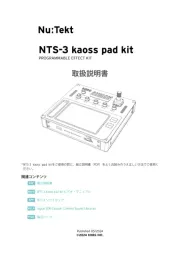
4 Februari 2025

27 Januari 2025

2 December 2024

2 December 2024

7 December 2023

19 Juni 2023

12 Juni 2023

11 Juni 2023

10 Juni 2023

1 Juni 2023
Handleiding DJ Gear
- Suonobuono
- AFX
- Flexson
- Envivo
- Martin
- IMG Stage Line
- Pro-Ject
- QTX
- PLAYdifferently
- Thorens
- Reloop
- Vonyx
- Audio-Technica
- Pangea Audio
- AV:link
Nieuwste handleidingen voor DJ Gear
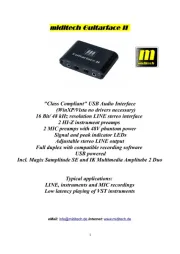
5 Augustus 2025
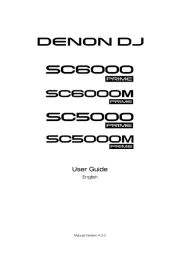
5 Augustus 2025
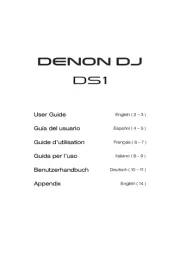
4 Augustus 2025
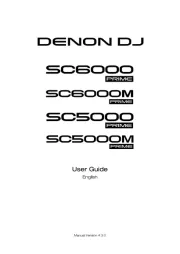
4 Augustus 2025
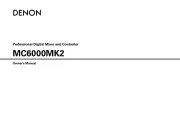
4 Augustus 2025
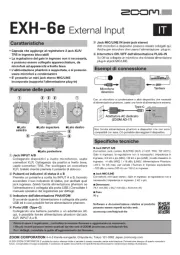
3 Augustus 2025

29 Juli 2025
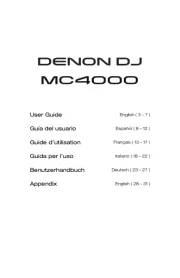
29 Juli 2025
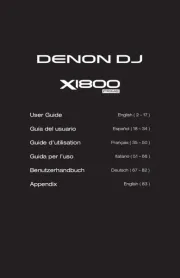
29 Juli 2025
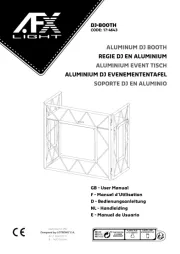
28 Juli 2025